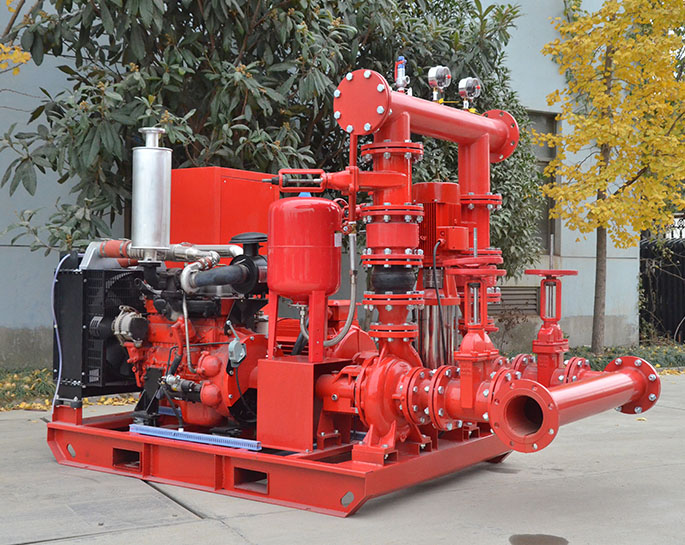What problems should be paid attention to in the installation of fire pump pipelines?
Installing fire pump pipelines is a critical part of a fire protection system, and it must be done correctly to ensure the system's reliability and effectiveness. Here are some key problems and considerations to pay attention to during the installation of fire pump pipelines:
-
Compliance with Codes and Standards:
- Ensure that the installation complies with all local building codes, fire codes, and national standards, such as NFPA (National Fire Protection Association) standards, which typically govern fire protection system installations.
-
Pipe Material and Sizing:
- Select the appropriate pipe material and size based on the system's requirements, including flow rates and pressure. Common materials include steel, ductile iron, and sometimes non-metallic materials like CPVC or HDPE.
-
Pipe Support and Hangers:
- Properly support and hang the pipes to prevent sagging or misalignment. Follow manufacturer recommendations for hanger spacing and support methods.
-
Pipe Routing:
- Plan the routing of the pipelines to minimize obstructions, ensure accessibility for maintenance, and avoid interference with other building systems.
-
Expansion Joints and Flexible Connectors:
- Include expansion joints or flexible connectors in the system to accommodate thermal expansion and contraction, which can occur due to temperature changes.
-
Valves and Fittings:
- Select and install appropriate valves and fittings, such as check valves, gate valves, and strainers, in accordance with system design requirements.
-
Pipe Labels and Markings:
- Properly label and mark the pipes to indicate their purpose (fire protection), flow direction, and any other necessary information. Use color-coding where applicable.
-
Backflow Prevention:
- Install backflow prevention devices where required to prevent contamination of the potable water supply.
-
Flow Test:
- Conduct a flow test to ensure that the fire pump and pipelines deliver the required flow and pressure as per the design specifications.
-
Hydrostatic Testing:
- Perform hydrostatic testing of the pipelines to check for leaks and ensure their integrity. Pressure testing should be conducted in accordance with relevant standards.
-
Fire Pump Installation:
- Install the fire pump itself in accordance with the manufacturer's instructions and ensure it is properly aligned and connected to the pipelines.
-
Alarm and Control Systems:
- Integrate the alarm and control systems with the fire pump and pipelines to ensure proper monitoring and functionality during a fire event.
-
Documentation:
- Maintain detailed records of the installation process, including "as-built" drawings, test results, and equipment manuals, for future reference and maintenance.
-
Inspection and Approval:
- Schedule inspections by local authorities having jurisdiction (AHJs) to ensure compliance with codes and standards and obtain necessary approvals.
-
Training:
- Train personnel responsible for operating and maintaining the fire pump system to ensure they understand its operation and can respond effectively in case of a fire emergency.
Proper installation and maintenance of fire pump pipelines are crucial for the safety of occupants and protection of property in the event of a fire. It is recommended to involve qualified professionals with experience in fire protection systems to oversee the installation process and ensure it meets all regulatory requirements and safety standards.


.png)
.png)

.png)


